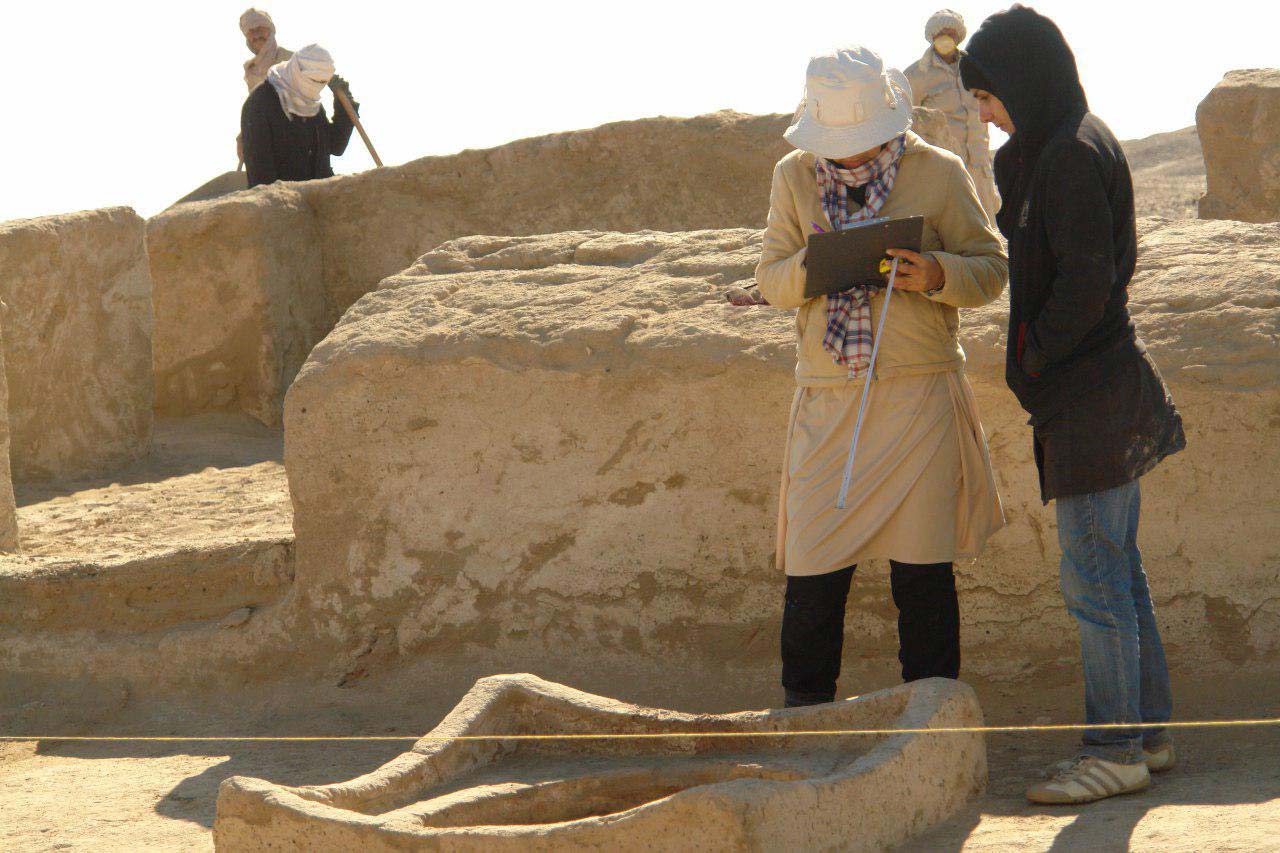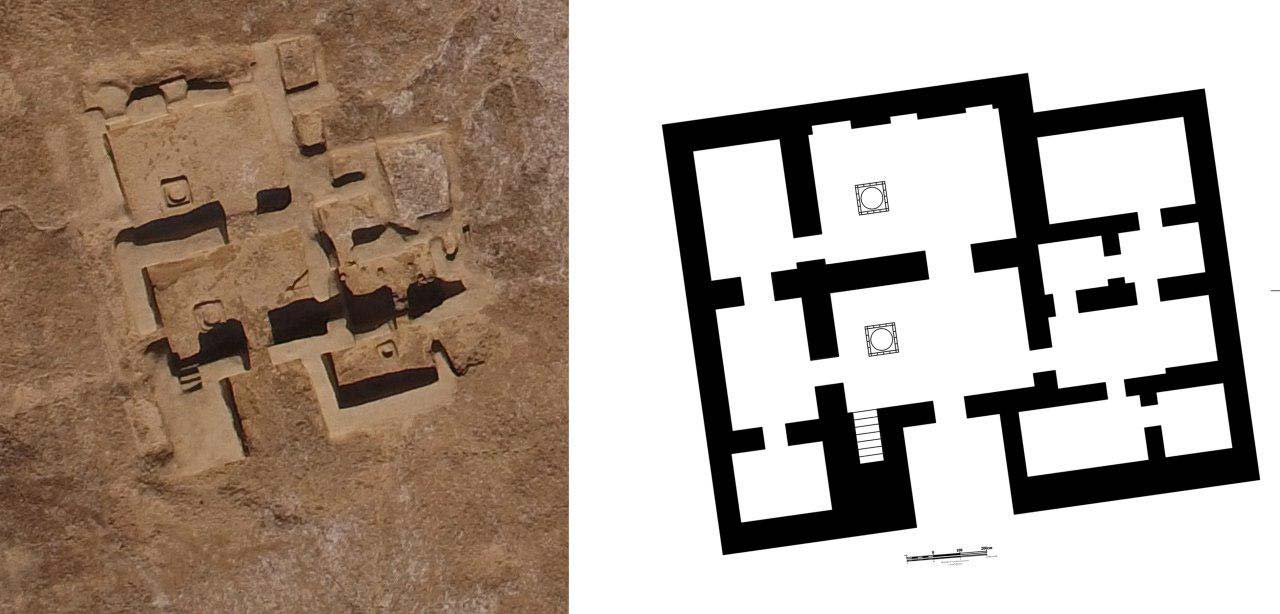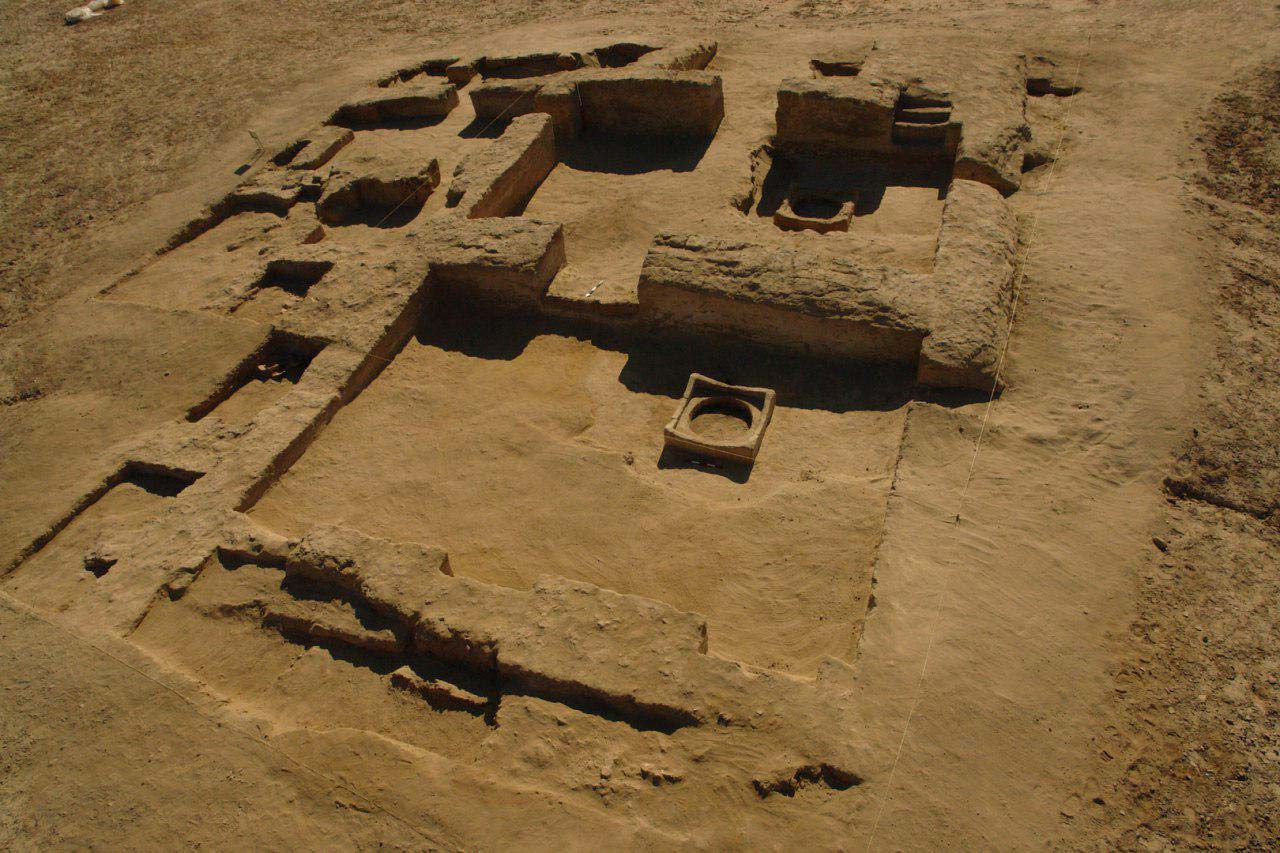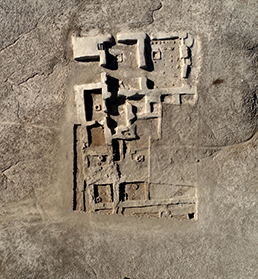- 30th of March 2018
Building no. 20
Building no. 20 is located in K’ squares, northwest of Building no. 1, east of the so-called Industrial Sector and northeast of the necropolis. On the surface of this trench architectural features such as thick walls were identified. Evidence from the upper level of the building that measures about 20 x15m, show that much of it was filled by sand. One of the principal goals of our excavation in this sector was to highlight the less-known aspects of architecture of the Monumental trench All evidence suggests that this building was evacuated systematically. For reasons that are not yet clear, after evacuation the building was not used anymore and it was filled with sand. Building no. 20, with12 spaces situated in a north-south direction, has a coherent architecture of mud bricks. Room shave right angles and walls are approximately 70 to 80 cm thick. Interior walls are covered with a white plaster made of clay and other substances, while on both sides doors are probably decorated with red clay or ochre. Building no. 20 is composed of various architectural components such as central rooms, side rooms, open spaces, storage rooms and a staircase probably to access the roof, all of which are built with mud bricks. No baked bricks were found.
This building has a main entrance on the southern side, sheltered from the wind between the two supporting walls. The entrance opens into the central room (Room no. 5). Other than this entrance, all the spaces are divided into different parts. A courtyard in the northern part marks the limit of Building no. 20. In the eastern side of the building there is a small room used as storage, and in the western part of structure a staircase probably to reach the roof.
Also building no. 20 is a special architectural complex and the presence of some architectural features have transformed it in more than a simple residential house, with high probabilities it has been a local temple from the late period III or very early period IV. Some architectural features such as 120 cm. thick walls with red coating especially on the entrances, very large hearths are strengthening this assumption, since such decorative features, i.e. painted walls, are not present in the architecture of Shahr-i Sokhta. Two large square hearths enclosed by scalloped edges are another particular architectural feature of this building. These hearths are of 140×140 cm. and have a central hole with the diameter of 50 cm. which are not the appropriate measures for common tasks like cooking. The evidences are suggesting that it was occupied only in a single and certain period of time and then abandoned . The entrance portal of this structure is on the south and quite opposite to the direction of the seasonal winds in Sistan. It seems that the portal had been blocked by a row of mud bricks on the ground without any mortar and probably with only a role of being a warning sign for the passengers. Pottery fragments found in this building are generally divided into two categories, including both unpainted and painted buff ware pottery common in all periods of Shahr-i Sokhta, mostly from the late centuries of period III onward. The buff ware potteries are decorated with the common patterns of the period III3, such as hatched leaves and other linear patterns. Another category contains the unpainted buff ware pottery with everted rims which are quite close to the pottery of historical periods of Sistan in terms of the morphology of the rims. These are found on the highest layers of this building. Similar pottery has been found during the recent seasons of excavation in the buildings of Area 26, on the eastern edge and the same level of the central depression of the site. This is an unpainted pottery with dark buff paste and dark brown slip, however the dating of this pottery is vague since they are not found in connection with any specific architectural remains. In general, based on the pottery samples of period III and early period IV, it seems that this building had been used only in one period and then abandoned, since the accumulated soil inside the building is the wind-driven sand without any cultural material and the painted or unpainted pottery approached as we reach the floor of the construction.

A big fireplace excavted in room no.5



Building no. 20 after recent excavation at eastern part in 2021
